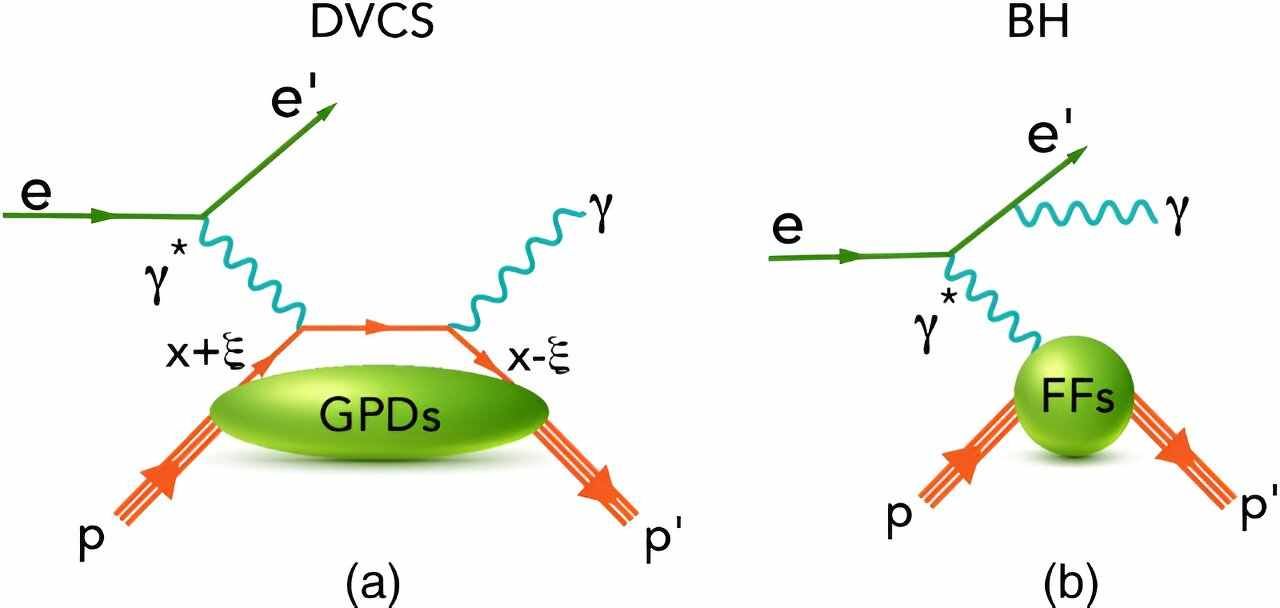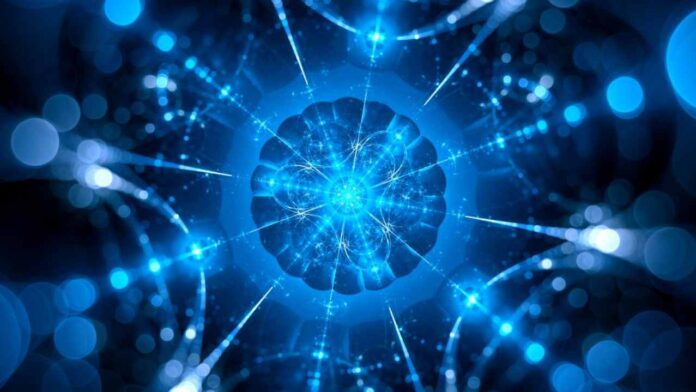The power of gravity is writ large across our visible universe. It can be seen in the lock step of moons as they circle planets; in wandering comets pulled off-course by massive stars; and in the swirl of gigantic galaxies. These awesome displays showcase gravity’s influence at the largest scales of matter. Now, nuclear physicists are discovering that gravity also has much to offer at matter’s smallest scales.
New research conducted by nuclear physicists at the U.S. Department of Energy’s Thomas Jefferson National Accelerator Facility is using a method that connects theories of gravitation to interactions among the smallest particles of matter to reveal new details at this smaller scale. The research has now revealed, for the first time, a snapshot of the distribution of the strong force inside the proton. This snapshot details the shear stress the force may exert on the quark particles that make up the proton. The result was recently published in Reviews of Modern Physics.

According to the lead author on the study, Jefferson Lab Principal Staff Scientist Volker Burkert, the measurement reveals insight into the environment experienced by the proton’s building blocks. Protons are built of three quarks that are bound together by the strong force.
“At its peak, this is more than a four-ton force that one would have to apply to a quark to pull it out of the proton,” Burkert explained. “Nature, of course, does not allow us to separate just one quark from the proton because of a property of quarks called ‘color.’ There are three colors that mix quarks in the proton to make it appear colorless from the outside, a requirement for its existence in space.
“Trying to pull a colored quark out of the proton will produce a colorless quark/anti-quark pair, a meson, using the energy you put in to attempt to separate the quark, leaving a colorless proton (or neutron) behind. So, the 4-tons is an illustration of the strength of the force that is intrinsic in the proton.”
The result is only the second of the proton’s mechanical properties to be measured. The proton’s mechanical properties include its internal pressure, its mass distribution (physical size), its angular momentum, and its shear stress. The result was made possible by a half-century-old prediction and two-decade-old data.
In the mid-1960s, it was theorized that if nuclear physicists could see how gravity interacts with subatomic particles, such as the proton, such experiments could reveal the proton’s mechanical properties directly.
“But at that time, there was no way. If you compare gravity with the electromagnetic force, for instance, there are 39 orders of magnitude of difference—So it’s completely hopeless, right?” explained Latifa Elouadhriri, a Jefferson Lab staff scientist and co-author on the study.
The decades-old data came from experiments conducted with Jefferson Lab’s Continuous Electron Beam Accelerator Facility (CEBAF), a DOE Office of Science user facility. A typical CEBAF experiment would entail an energetic electron interacting with another particle by exchanging a packet of energy and a unit of angular momentum called a virtual photon with the particle. The energy of the electron dictates which particles it interacts with in this way and how they respond.
Reference:
V. D. Burkert et al, Colloquium : Gravitational form factors of the proton, Reviews of Modern Physics (2023). DOI: 10.1103/RevModPhys.95.041002
